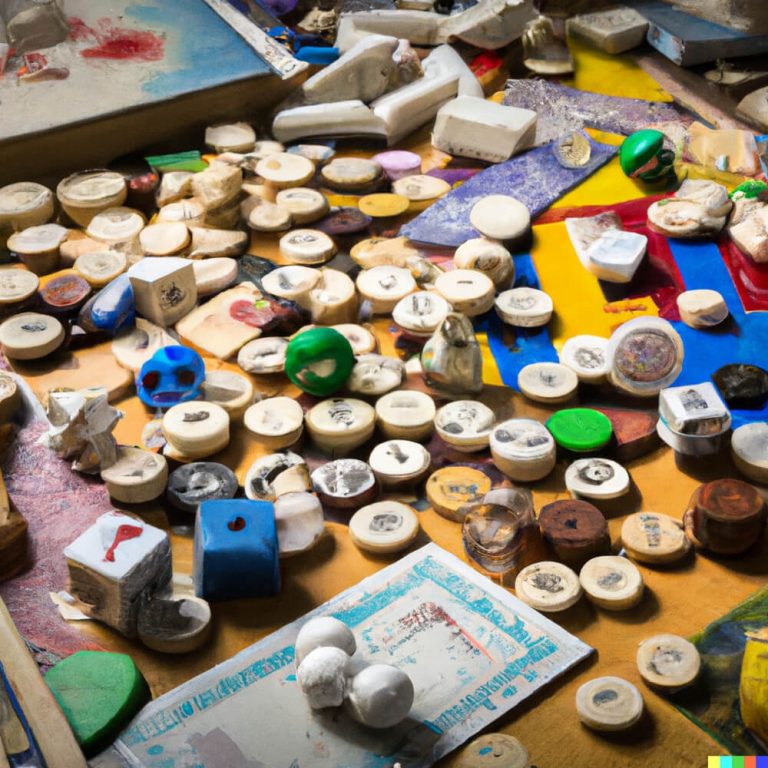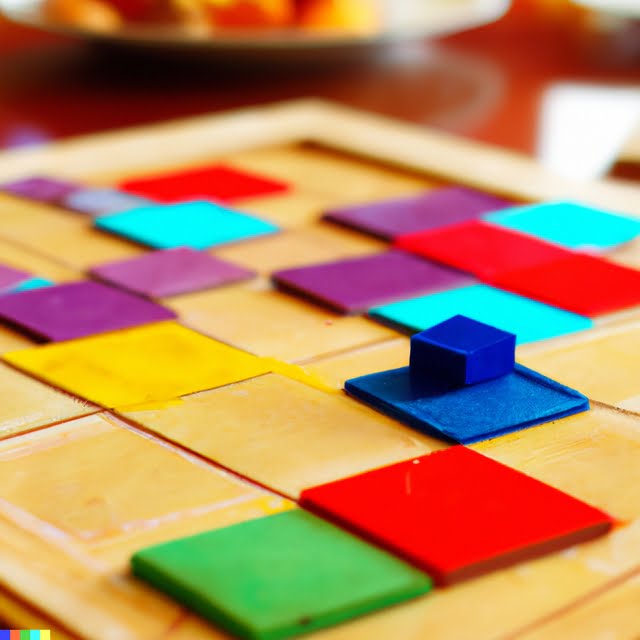Introduction
Board games are a great way for connecting, competing, and having fun with family and friends! They have been around since ancient times and remain popular today. In addition to the obvious entertainment value of board games, they can also be helpful educational tools, as they can teach skills such as planning, forecasting and strategizing. They provide an opportunity to interact socially while solving puzzles or engaging in competition. Furthermore, many board games are designed to promote cooperation rather than competition between players, allowing players to work together towards common goals. Thus, making board games is a great way to bring people together while building skills and having fun at the same time!
In order to make your own fun board games you need some basic materials such as cardboard or a large paper sheet (you can even use an old table cloth), markers or paintbrushes if you want some color and details on your game boards, scissors for cutting your game pieces out of cardboard or paper, straight pins for attaching game pieces securely, some plastic sheets for keeping track of scores (optional) and lastly you’ll need an imagination ” this is where all the creativity comes from. Before you start making your game think about what kinds of rules it will have; you could theme it around a certain subject such as mathematics or geography or animal species so that one has better understanding on what the point of the game is and why one should play it. Write down your idea on paper with brief descriptions about each rule then get started designing ” use simple squares or hexagonal shapes for your playing pieces design (these also help when scoring) try not to get too creative here because thee form needs to be somehow related with what kind of gameplay happens while playing.
Materials and Ideas
Materials: To make a board game, you’ll need a few basic supplies. First, you will need a flat surface”usually a hard floor or tablecloth will work well for this purpose. Next, you’ll need some materials for creating the game pieces – colored paper, dice, markers and other craft supplies such as glue and scissors can be used for this part. Additionally, you may want to pick up some board game template pieces from hobby stores or online shops to give your game an extra creative touch.
Ideas: One of the best parts of making your own board game is getting creative with ideas. When coming up with your game’s storyline or mechanics, consider different storylines and themes – popular themes like space exploration or fantasy can provide great inspiration. Additionally, games can be based on famous stories, books or other literature ” this could involve trying to collect characters along the way in the form of cards or special pieces. When it comes to the actual gameplay mechanics ” think about writing basic rules for how moves are made, what’s considered victory etc., as these needs to be written down so everyone knows how the game is played. Finally, don’t forget to have fun by coming up with interesting characters and items that give players different powers during play – adding some elements of luck (such as rolling dice) can also add some extra excitement!
Game Overview
Making board games can be an exciting and fulfilling endeavor. In order to make a successful, fun, and enjoyable board game, there are several steps that should be taken into consideration. First, you must determine the basic nature of the game. What is the core concept or specific theme? Will it be a strategy game, card game, trivia game or something else? Once this is established you can then move forward with designing the rules and objectives for the players.
You will also want to explore ways to achieve versatility in your board game. Are there different modes of play that can alter the rules of gameplay? Are there cards that bring new player choices into play? Perhaps by creating multiple levels of difficulty or a scoring system based on how successful each player accomplished their goals? Such methods are great ways to keep players engaged and hungry for more as they progress through each round of your game. Additionally, writing down any ideas for future expansions keeps the potential for further customization alive within your design.
Design
Designing a board game can be a fun, rewarding and challenging experience. To create a fun playing experience for players, the rules and mechanics of the game should be thought through carefully. Having a clear understanding of how players move throughout the game, what actions they can take and when to do so is essential in creating great game flow. To bring your design to life and add depth to your concept, elements such as chance and skill are important factors to consider.
Building a theme is another significant part of making fun board games. This can come in many forms, from simple illustrations on cardboard pieces to elaborate 3D models. A strong theme gives more meaning to players’ decisions by connecting them with the adventure they’re engaged in. It also enhances visuals and provides opportunities for creativity during play. By building an atmosphere with rich narrative elements you can ensure that each playthrough provides something new for each person experiencing it. Lastly, having a well-done theme could draw in people not familiar with your game but interested in immersing themselves in its world
Playtesting and Iteration
Playtesting and iteration are an important part of board game creation. After the idea and rules of the game have been established, a designer must play and test the game. During this process, a designer evaluates each attribute of the gameplay including mechanics, interface and graphics, interaction with players, scoring, etc. By playtesting, designers can learn how well each element works in group play and optimize every aspect to achieve their desired balance.
Once tested by players, designers should look critically at feedback given to determine what needs changing or refining. It might be merely tweaking rules or adding new variations on different phases within the game. For example if a phase acts as an obstacle for players to complete then varying it and making it easier can add diversity and challenge. If a certain aspect is too hard then adding an extra turn may be necessary; likewise decreasing rewards for difficult tasks can encourage players to take lesser paths instead of struggling through intense phases. Taking feedback from experienced gamers or even your own family will provide invaluable hints on what needs fixing. Iteration of rules by inputting changes over multiple versions is key in creating a balanced game with good replay value – since part of fun is repeating scenarios but not doing exactly the same motions again – it keeps things interesting while allowing all ages to enjoy it
Aesthetics and Presentation
Making a fun board game is not only about the gameplay and mechanics, but it’s also about the aesthetics and presentation. How your board game looks has a huge part in whether it is enjoyable or not. You’ll want to consider elements like visuals, style, and packaging. Visuals can be illustrated in the form of drawings, photographs, or shading to make playing pieces look interesting. Style should be adapted to bring out certain themes in your board game as players move around it. Such as a haunted house theme with spooky sounds and decorations, making the experience interactive for more immersive play. Finally, when choosing packaging for your board game, make sure all components are securely stored inside and travel friendly so you can share your masterpiece with others. With all these points in mind, you’re ready to make a unique fun board game!
Finishing Touches
Once the game’s design is complete and tested, it’s time to give it a professional look. If possible, hire a graphic designer to create artwork for the board and game pieces. If that isn’t an option, there are plenty of programs and templates available online that can help produce high-quality graphics. Ask family and friends for feedback on different designs created through these means. Finally, if hand painting or drawing is preferred, ensure that the graphics produced are clear and easy to understand at a glance for gameplay purposes.
Once finalized, printing will be needed for the various components of the game: rules booklets, cardboard pieces/tiles, cards, etc.. Committed board game makers may opt to tour local print shops with their project in hand; however most find convenient rewards in shopping around online or utilizing services like PrintNinja that offer large orders with attractive discounts. After this step, some preparation will inevitably be necessary to build the final product before it can hit store shelves or be played by friends. This could include cutting out cards, gluing together tiles/boards/pieces and packaging everything together. Now that the creation process has come full circle ” it’s time to play!
Conclusion
Creating a fun board game is a great way to express creativity, spend quality time with friends and family, and build something that you can take pride in. Making a board game doesn’t have to be difficult or overwhelming. By following the steps outlined in this article, you’ll be on your way to creating a unique, entertaining, and challenging game in no time. From developing the rules and mechanics of your game all the way through crafting and assembling the physical components of your project, there are many chances for individualization that will help make your game truly special. After playtesting your game several times with a vision towards making tweaks and improvements, it’s time to share your creation with friends, family or even public testing if you choose!
Finally, taking on something as complex as creating an enjoyable board game requires thoughtful consideration of both creative and technical aspects of design. It certainly helps to think about how various elements of your design interlock instead of addressing specific issues one at a time. Keeping this advice in mind will help ensure that the end product not only works well but also provides an engaging experience for players. With patience and care, making fun board games can be a rewarding experience that allows you to display your creative side while still challenging yourself technically. So go forth confidently – the next breakthrough board or card game may come from you!

I love playing all kinds of games – from classics like Monopoly to modern favourites like Ticket to Ride.
I created this blog as a way to share my love of board games with others, and provide information on the latest releases and news in the industry.





